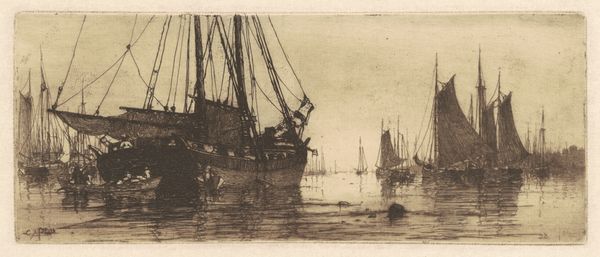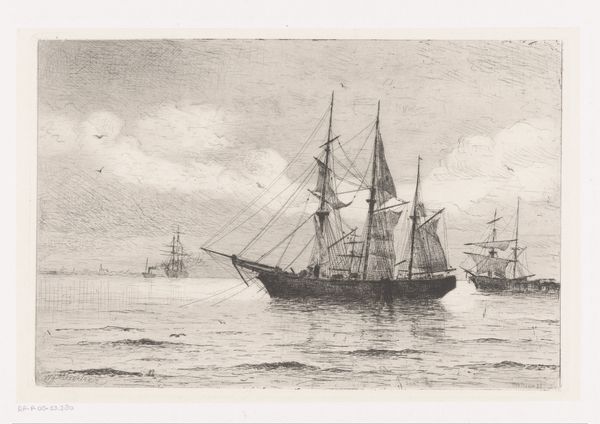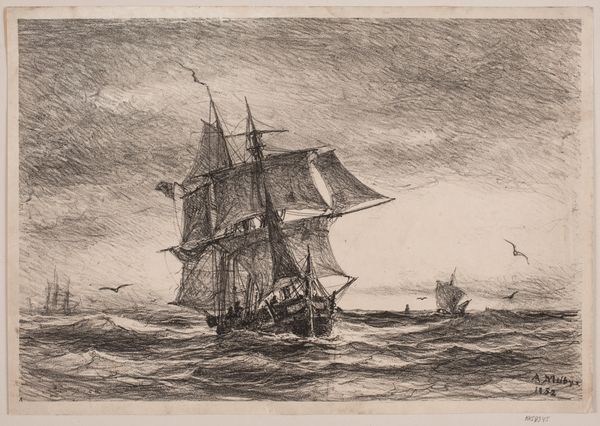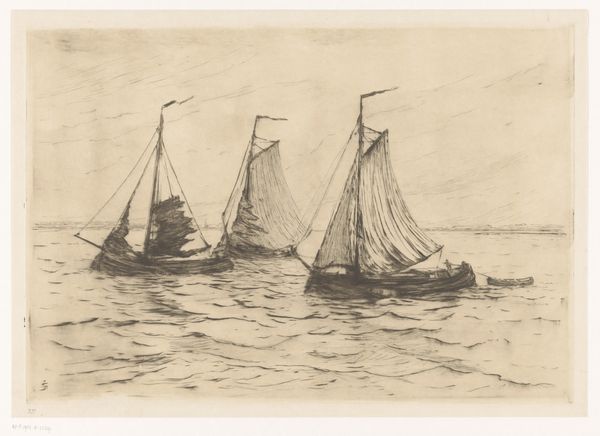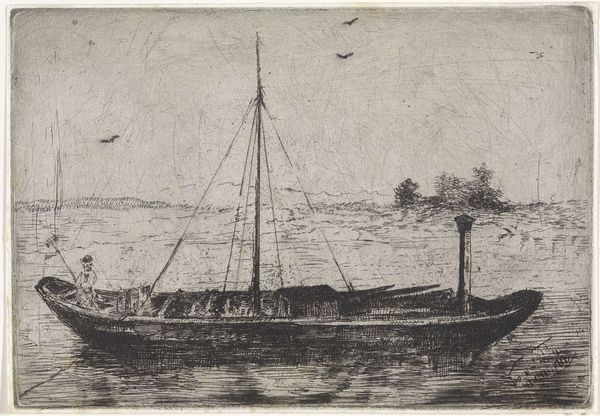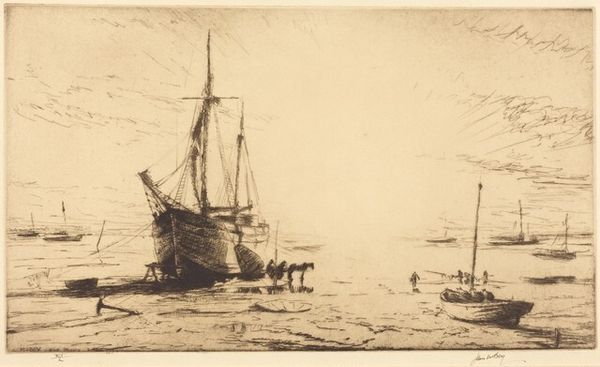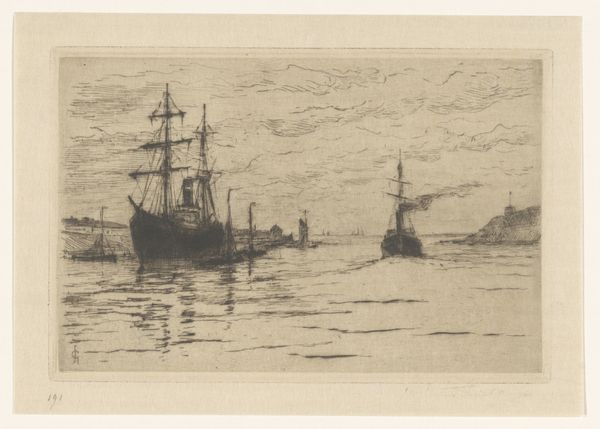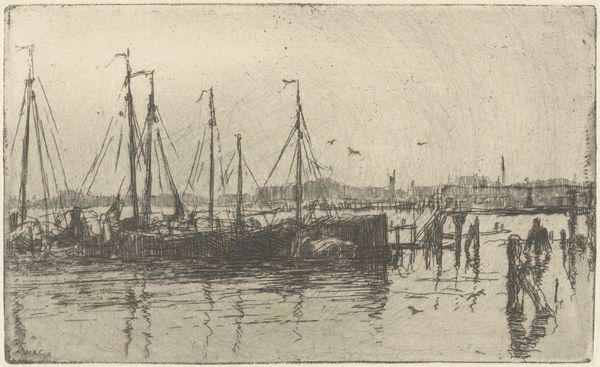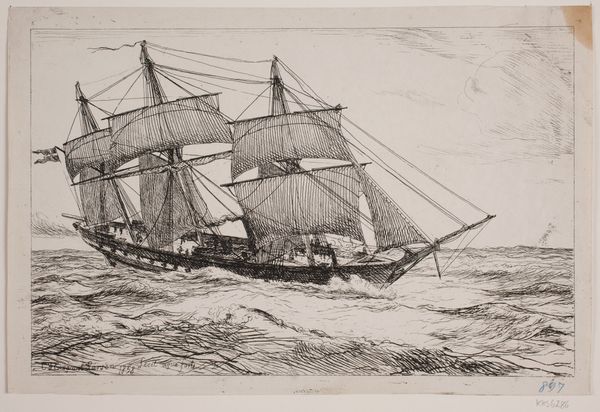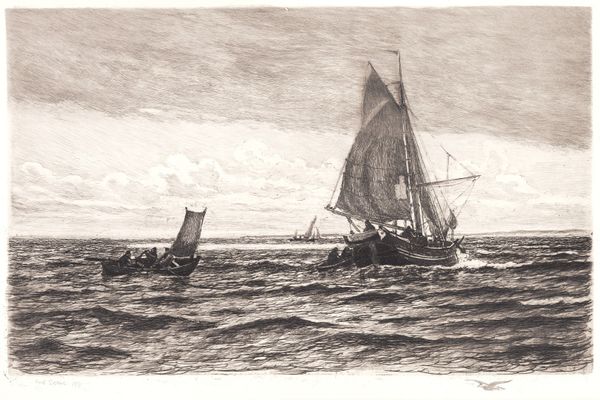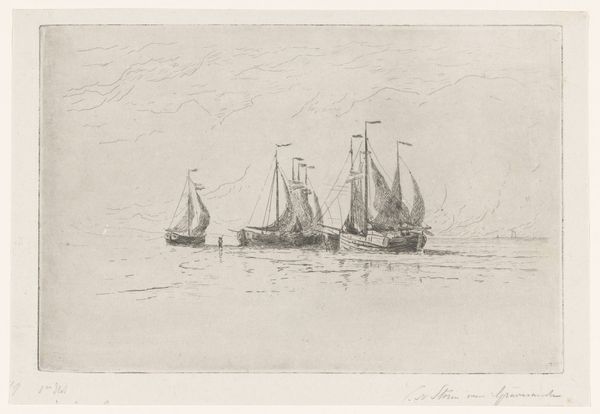
print, etching
# print
#
etching
#
landscape
#
pencil drawing
#
realism
Copyright: National Gallery of Art: CC0 1.0
Curator: What a wonderfully subdued scene. "Coasting Trade Vessels, Italy" by Adolphe Appian, created in 1874. It's an etching, a technique that allows for such intricate detail in monochrome. Editor: My breath actually hitched. It’s almost melancholic, isn’t it? The water’s so still, the sky so heavy. Makes you feel like time itself is holding its breath. Curator: Absolutely. The etching medium lends itself beautifully to capturing the nuances of light and shadow, crucial to the emotional tone. We should note Appian's focus here, reflecting a mid-19th-century interest in capturing the lives of ordinary people and the changing industrial landscape. Coasting trade was essential. Editor: And it feels utterly authentic, far removed from heroic narratives, despite the large sailing vessels. There's a humbleness to the working vessels in this scene. I love how he suggests figures onboard, almost ghostlike in their simplicity. The little rowboat in the foreground gives the whole piece such great scale too. It’s like a whispered story. Curator: Indeed, Appian’s works gained traction precisely because they captured these everyday scenes with an air of authenticity, resonating with a growing urban audience eager to reconnect with rural life, even through imagery. And it reflects a change in art patronage as art begins to shift to a wider public consumption. Editor: Do you think that heavy sky reflects a larger societal anxiety of the era? It’s so palpable, it almost feels… prophetic. Or is that just me getting carried away? Curator: (chuckles) It's possible, and fruitful, to read such moods into art, especially as we look back from our present. Industrial expansion and urbanization also prompted many artists to celebrate, sometimes elegiacally, what was being lost. Editor: Maybe that's it exactly. He's not just showing us the boats, he's etching a memory of them. Well, thanks for clarifying the historic background for us – I had a field day here today. Curator: Likewise. Considering these works in the social context allows for a richer viewing experience, and that's what we aim to do.
Comments
No comments
Be the first to comment and join the conversation on the ultimate creative platform.

